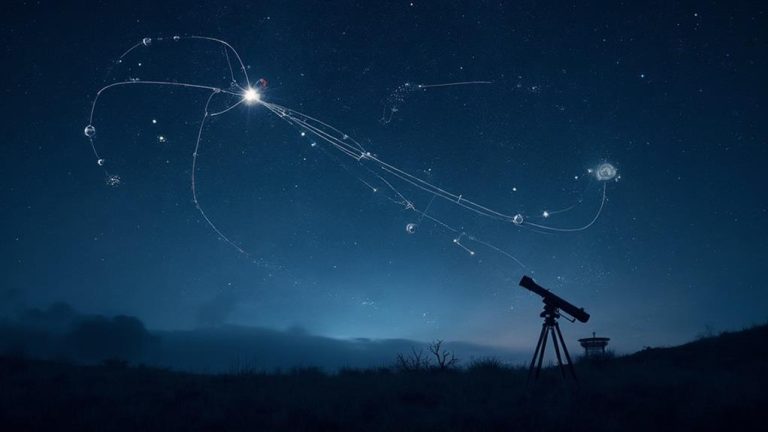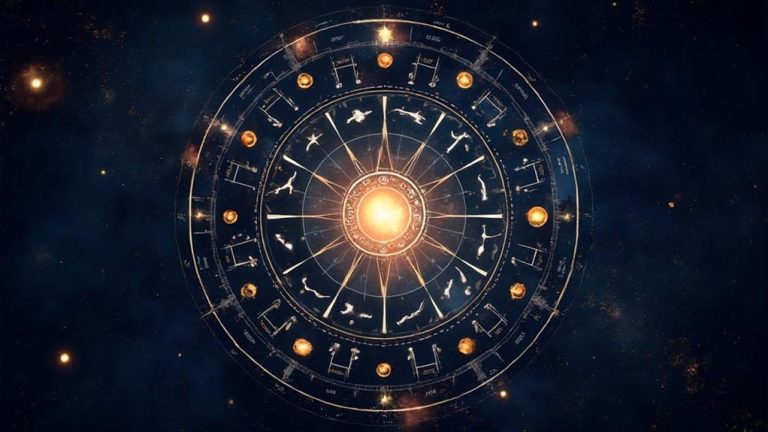Understanding Celestial Degrees in Astrological Charts
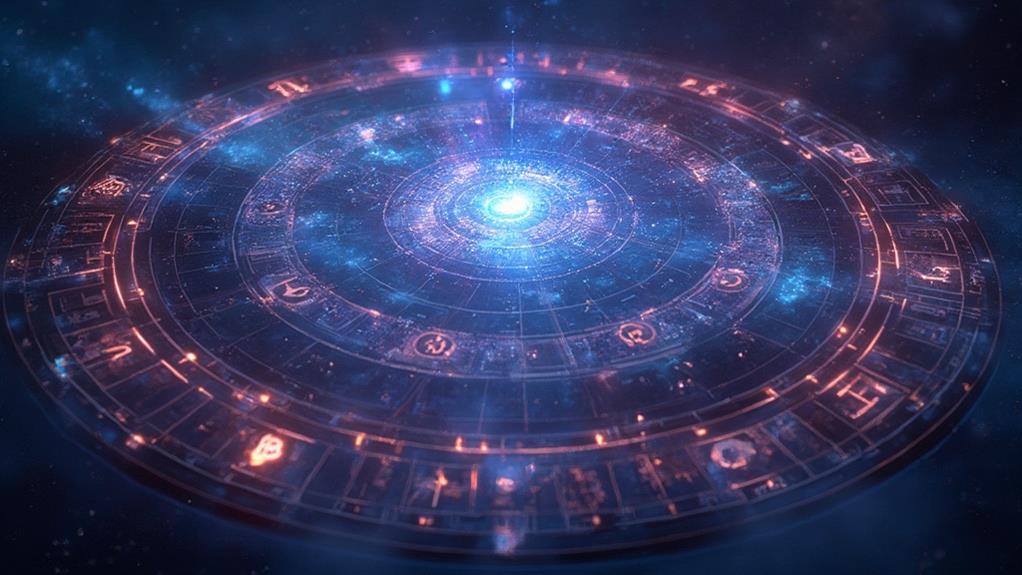
Understanding celestial degrees in astrology is key to interpreting planetary positions, ranging from 0° to 29° within each zodiac sign. These degrees reveal insight into astrological timing and personal destiny. Each degree carries its own unique energy, influencing how planetary movements interact with an individual’s natal chart. The celestial equator in astrology serves as a reference point for mapping the heavens, helping astrologers connect planetary positions to zodiac signs with precision. By examining these degrees, deeper layers of meaning emerge, offering profound guidance on life’s cycles and potentials.
Early degrees (0-9°) often indicate fresh energy, while late degrees (20-29°) carry karmic significance, suggesting lessons that need resolution.
The Basics of Celestial Measurement
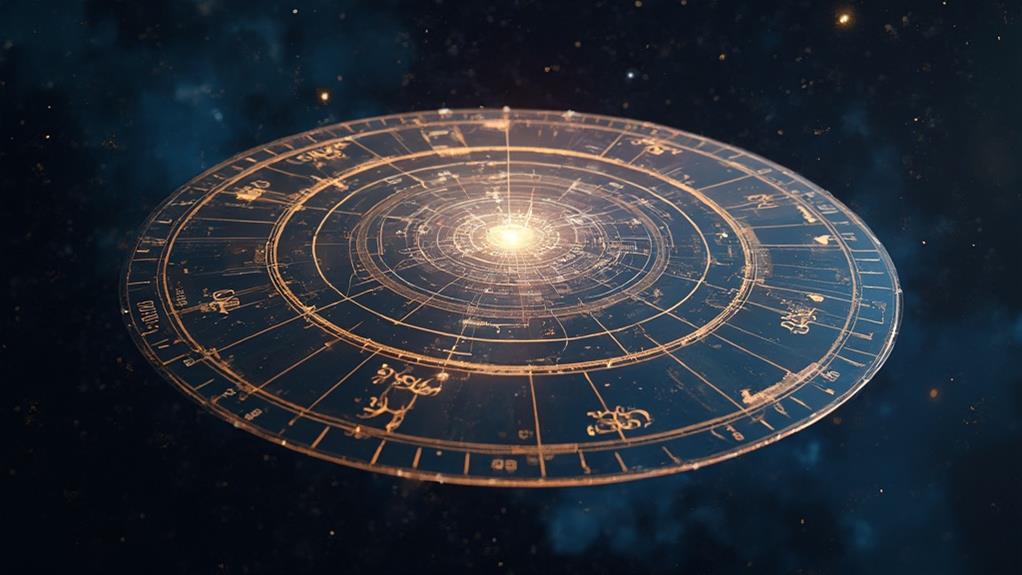
Astrology divides the 360° celestial sphere into twelve segments of 30° each, called zodiac signs. Each degree marks a specific point in the sky for analyzing planetary positions.
The key measures are celestial longitude, latitude, and right ascension. Celestial longitudes are the most important and begin at the Aries point (0° Aries).
When examining a natal chart, positions are detailed in degrees, minutes, and seconds. One degree contains 60 minutes, and one minute contains 60 seconds, making analysis precise.
Reading Zodiacal Degree Positions
Zodiac degree positions help fine-tune astrological readings. For example, early zodiac degrees (0-9°) show new beginnings or raw energy, while later ones carry deeper, transformative energies.
Crucial degrees such as 0°, 13°, and 26° often signal turning points, particularly in cardinal (Aries, Cancer, Libra, Capricorn) and fixed signs (Taurus, Leo, Scorpio, Aquarius).
Planetary aspects—angular distances between planets—become particularly significant when understanding how these degrees influence planetary relationships.
Critical Degrees Across Zodiac Signs
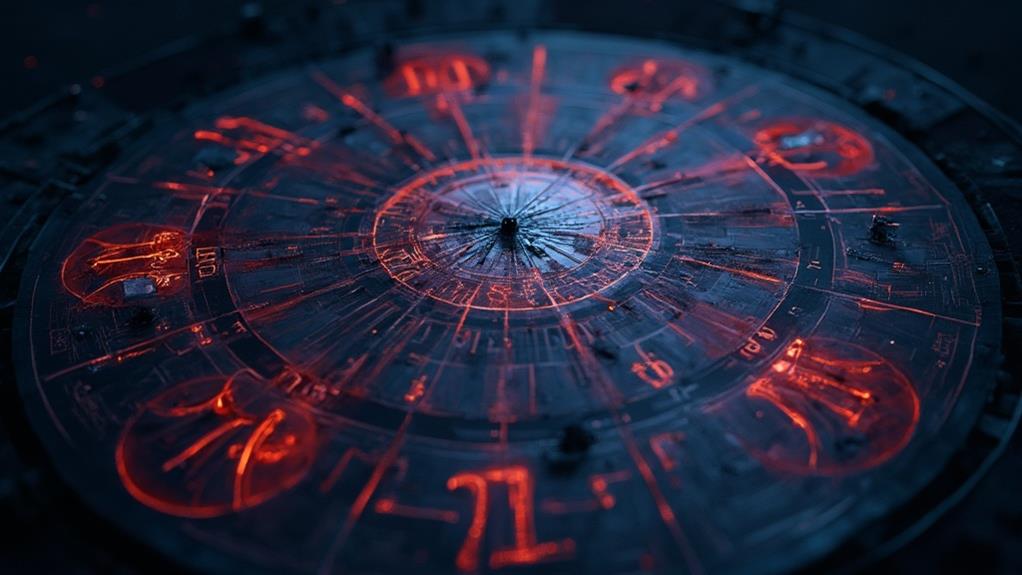
Critical degrees represent key points in each zodiac sign. They reflect moments of transformation, especially in fixed and cardinal signs.
Fixed Points and Power
Degrees like 0° and 29° in any sign symbolize cosmic beginnings and endings. For instance, 0° Aries is known as the Aries Point, representing collective and personal destiny.
The Royal Stars of Persia—Aldebaran, Regulus, Antares, and Fomalhaut—are ancient fixed stars aligned with leadership and significant life transformations.
Cardinal Activating Degree Points
Specific cardinal degrees—0°, 13°, and 26°—trigger life changes. These degrees hold significant importance for initiating action and creating movement.
For example, planets aligned with 0° Aries signify the start of something new, while 13° and 26° degrees aid in resolving karmic patterns.
Anaretic Last Degree Effects
The 29th degree, called the anaretic degree, indicates a major karmic summary of the sign’s lessons. Planets at this degree carry intense energy and require the individual to master that sign’s themes quickly.
This degree signifies a key point of transformation, urging immediate resolution before transitioning to the next energy.
Calculating Major Planetary Aspects
Planetary aspects are calculated by measuring the angles between planets around a 360° circle. Key aspects include the conjunction (0°), opposition (180°), trine (120°), square (90°), and sextile (60°).
To manually calculate aspects, subtract the smaller degree from the larger. If needed, subtract the result from 360°. Software tools simplify this process, but manual understanding sharpens chart analysis skills.
Astrologers allow degree “orbs”—small margins of error—in aspects. For example, conjunctions usually allow an 8° margin, and trines allow 6°.
Fixed Stars and Degree Alignments

Fixed stars like Regulus, Aldebaran, and Antares hold special significance in astrology, especially when planets align with them at specific degrees. Such alignments amplify the planets’ effects, often signaling major life transitions.
Fixed stars shift at a rate of 1° every 72 years due to precession, so astrologers pay close attention to their alignment with natal planets.
Predictive Techniques Using Degree Points
Astrologers use critical degrees to forecast significant life events and personal transformation. Particular degrees in your chart act as triggers for important changes.
Each degree of your chart can symbolize distinct lessons or events, providing insights into timing and the unfolding of your astrological narrative.
Critical Degree Chart Analysis
Critical degrees (0°, 13°, and 26° for cardinal signs, 9° and 21° for fixed signs, and 4° and 17° for mutable signs) are hotspots in astrology that highlight important moments in the natal chart.
When activated by planetary transits, these positions often indicate pivotal events or breakthroughs.
Working With Solar Points
Solar points are specific degrees that relate to personal development and future events. For example, tracking the Sun’s presence in your natal chart can reveal key periods for growth.
Use predictive methods like Solar Return or Solar Arc to anticipate the timing of critical life developments.
Annual Progressions Through Degrees
Annual progressions involve tracking planetary movements over time, roughly 1° per year. Progressions show how energies in your chart evolve, often coinciding with periods of spiritual growth and life changes.
Key progressions, such as the Sun or Moon crossing natal angles, signify major developmental milestones.
Frequently Asked Questions
Why Do Some Astrologers Consider Retrograde Degrees More Potent Than Direct Ones?
Retrograde degrees are viewed as more potent because they intensify a planet’s energy by reversing its motion. This reversal strengthens internal focus and emphasizes unresolved issues in the natal chart.
How Do Parallel Degrees Differ From Traditional Longitudinal Measurements?
Parallel degrees measure celestial latitude, showing how high or low a planet is above the celestial equator. Traditional longitudinal measurements, on the other hand, determine the east-west position of planets along the zodiac.
What Role Do Degree Symbols Play in Sabian Astrology Interpretations?
Sabian symbols assign meaning to each zodiac degree. They provide deeper insights into each specific degree, helping astrologers discover spiritual or karmic lessons linked to a person’s natal chart.
Can Zodiacal Degrees Influence Career Choices and Professional Timing?
Yes, degrees within your 10th house (career) and especially critical degrees like 0°, 13°, and 26° can mark key moments for career changes. Astrological transits triggering these degrees often align with professional shifts.
Do Planetary Stations at Specific Degrees Create Long-Term Effects in Charts?
Yes, planetary stations (when a planet appears to stop before changing direction) leave a lasting impact in your natal chart, especially when they occur at important degrees. Such stations can often signal significant life turning points or transitions.



